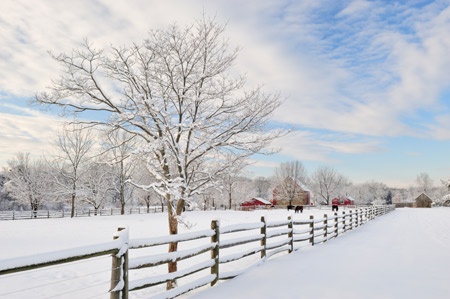Snow, Cold Take Aim at U.S. Farm Belt This Weekend
Category: Weather

(Reuters) – A winter storm this weekend followed by a plunge in temperatures, coupled with another cold push late this month, could threaten livestock in the U.S. Plains and possibly winter wheat in parts of the Midwest, meteorologists said.
The storm should bring 2 to 8 inches (5 to 20 centimeters) of snow from South Dakota to northern Ohio, with up to 10 inches (25 cm) in northern Iowa, according to National Weather Service maps. The agency posted winter storm warnings Thursday afternoon in South Dakota and Iowa and winter storm watches all the way to New England, where accumulations could top 12 inches.
The snowfall may complicate the transportation of livestock but should help insulate dormant winter wheat from cold air expected in the storm’s wake.
However, portions of the northern Midwest may miss the snow. Some 15 to 20 percent of the region’s soft red wheat crop may be at risk of winterkill early next week, the Commodity Weather Group said.
Temperatures on Sunday were expected to dip to 1 degree Fahrenheit (minus 17 degrees Celsius) in Des Moines, Iowa, around 8 F in Chicago and minus 4 F in Lansing, Michigan. Winter wheat is most resistant to cold in January and generally should be able to withstand sub-zero temperatures for a few hours.
Livestock may be more vulnerable, especially given expectations for Plains temperatures to remain below normal through much of the next 15 days.
“That’s what gets hard for livestock. It’s sort of a cumulative effect. You cut back on any weight gains during that time period, and you’ll have some outright losses, I would guess, in some of the more significant cold air outbreaks,” Commodity Weather Group meteorologist David Streit said.
Streit and others said forecast models predict a blast of Arctic air around Jan. 28 to 29 that threatens to push temperatures below zero degrees F in the Plains, Midwest and possibly into northern Delta wheat states like Arkansas and Tennessee.
“It’s very unusual for them to see sub-zero readings, but this is one that does carry that potential,” Streit said.

